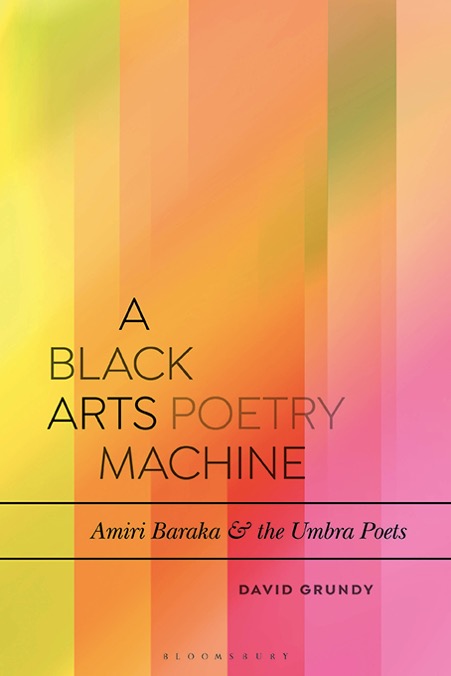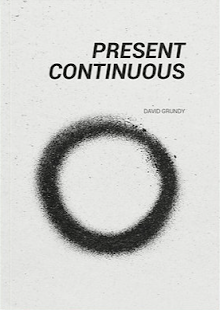Kaija Saariaho has passed away at the age of 70. Saariaho passed at the crest of a wave of public attention. Last month her work was celebrated in a BBC ‘Total Immersion’ weekend at the Barbican Centre, while not far away at the Royal Opera House, Covent Garden, her opera Innocence received its long-delayed UK premiere. (The 2021 Aix performance can be viewed in its entirety on Youtube).
Innocence, on which I’ve been writing a separate piece, is an extraordinary work, exploring multi-lingual experience, the legacy of violence, and the seething contradictions of present-day Europe, in a music that never feels forced in its treatment of contemporary themes, a music of dramatic power and aural luminosity that consistently resists dramatic cliché. And perhaps it’s her operas that will stand out in the tributes to come: certainly, they brought her the kinds of attention rare for composers of new music, particularly ones who choose not to restrain or compromise their musical language. L’Amour de loin, Adriana Mater, the oratorio La Passion de Simone and Innocence are extraordinary works by any standard, condensing the lessons of her prior work, with its exploration of the varieties of orchestral electronic and instrumental colour, and adding the architectural question of music’s relation to the word.
That question--the relation of music to word--is, perhaps, both the abiding formal question and the great theme of these works, as they ask how to bear witness, to give testimony, to express what corrodes or exceeds the bounds of expression, whether that’s through the lens of courtly love, in L’Amour, war, in Adriana and Simone, or the contemporary spectre of acts of mass violence Innocence. The way these works go about the process is far from grandiose: instead, Saariaho has invariably favoured smaller ensembles, chamber dramas of one or two--a trend bucked in fascinating and complex ways by the social webs and layerings of past and presence in Innocence--from which these bigger canvases can be woven. Again, both a formal and a thematic analogy suggests itself, as throughout her career, particularly in her orchestral music, small-scale relationships and details build up to huge, sprawling masses of sound, the parts darting back and forth between each other and between the whole.
In any case, the Saariaho family’s decision not to reveal the details of the illness until after her passing has admirably kept the focus on her work, freed from the sometimes distorting traces of valedictory regard. For what’s clear is that the work she was producing almost until her death was not so-called ‘late work’. It was, to be sure, mature, achieved, contemplative, and all the other aspects one might aspect from late style, but so was all her music, from the beginning. This was not, in other words, a work of ruminative looking-backwards, of retrospective rumination or reckoning; or it was so only inasmuch as Saariaho was always concerned with the multiple valences of time, her music looking in all directions simultaneously, dissolving and suspending time while immersing us in its midst. Below is a review of the Total Immersion concert I wrote last month, posted here in tribute.
Barbican Centre, Sunday 7th May 2023
Anu Komsi, Anssi Karttunen, BCC SO/Sakari Oramo
For the final concert in a day of performances of Finnish composer Kaija Saariaho’s work, the BBC Symphony Orchestra came together to play four orchestra pieces spanning three decades, offering readings of rare radiance and clarity. From 1989, Du Cristal, the earliest work on the programme, is one long sustained, not-quite climax: an extraordinary array of textures shimmering and hovering on a brink of controlled delirium. With notes piled up on top of one another to create dense layers, the orchestral sound is massive, sometimes overwhelming, yet at the same time it feels as if something is being contained: a seething mass, a great, explosive force constantly on the edge. This effect of suspended movement is emphasized by five percussionists on an array of overlapping tuned metal—glockenspiel, crotales, triangles, tubular bells, xylophone, vibraphone—and multiple, booming kettle drums, with a synthesizer, harp and piano acting as a kind of additional rhythm section. Yet, particularly when witnessed live, what stands out if Saariaho’s care for individual detail: the fortissimo trill of a piccolo sounding out over the whole orchestra, a miniature choir wailing clarinets, the whole work ending, magically, on held harmonics from a single cello.
Twenty years on, the cello concerto Notes on Light is more conventional in its format, yet its effect still imparts a magical strangeness. With Anssi Karttunen the redoubtable soloist, over the five, run-on movements, the feel of the piece is pensively ecstatic or ecstatically pensive, the orchestra sympathetically twitching with or in alternation with the soloist who alternates motivic lines and ethereal harmonics. From a brief silence emerge held building chords gradually layered, gentle dissonances, underscored by repeating plangent piano chords and whispering cymbal washes. At times the characteristics of the cello writing seem to extend to the entire ensemble, the effect of downward turning pitch slides and bends, giving the effect of something winding down: a slackening pulse, a slowing heart rate, the gentle exhaling of breath. A work of gentle fluctuation, as opposed to the translucent massiveness of Du Cristal, the piece is once again alive with morphing organic colour and constantly shifting refracting texture, beams and waves and swells, a whole other world.
Written in 2020, Saarikoski Songs was the most recent work on the programme: it was here given its UK premiere by its commissioner, the extraordinary soprano Anu Komsi. The texts by Finnish poet Pentti Saarikoski—Communist, bohemian, translator of both Joyce’s and Homer’s Ulysses—offer nature poetry shadowed by pantheistic assurance and the threat of destruction. It’s hard not to read their words as dire warnings of the ecological catastrophe or the threats of war in the contested borders of and beyond Europe (as a Finnish war child, Saarikoski was evacuated to Sweden). “The forest is an academy obliterated by barbarians”, writes Saarikoski in the first text, ‘The Face of Nature’, reversing the cliché of “nature red in tooth and claw” by which human governments project social destruction onto nature, thus justifying their own actions. Across the world the Amazon rainforest burns: wordless melismatic syllables reach for high vibrating notes, twittering, rhapsodizing or lamenting, the orchestra aswirl on sustained tremolo or a doubled motif, a woodblock tap or rustle of bells, low, sliding strings, an unexpectedly lush string chord, as the soprano momentarily becomes “the song of birds lost in the extinction”. The subsequent settings are sardonic (‘Everyone from now on will have their own’), tenuously rhapsodic (‘All of This’), bitingly tensile (‘Bird and Sanke in Me’), and finally raptly mysterious (‘Through the Mist’), closing out on a final series of wordless held soprano notes and a final glockenspiel note which seems to condense the entire work into a single, miniature chime.
For me, it’s the closing piece Circle Map, that, along with Du Cristal, is the real highlight here. Written for the largest ensemble configuration of the night, this 2012 work sets poems by Rumi in their Persian originals. It is not, however, a conventional song cycle in the manner of the Saariskoski songs. Rather, recordings of the poems by Arshia Cont were electronically treated by Saariaho and her husband, composer Jean-Baptiste Barrière: broadcast on speakers surrounding the audience, they are both integrated into the orchestral texture and stand outside like a kind of radiant alien object (think the monolith in Kubrick’s 2001). Once more we hear swirling harp, tuned percussion, motifs that rise and fall into hushed held chords stretched like thin wires; plangent brass underscored by low piano rumbles, the orchestra as a swooning, swooping, shimmering entity full of rich inward song. The treated voice is a deus ex machina, not the meditative swooping soloist of the previous works but instead coming as if from the outside with the thrill of the integrated unknown, as the orchestra accompanies the echoing pitch cadences of speech translated to simultaneous monody. A film is projected over the stage, showing a hand tracing out script overlaid with superimpositions of computer-generated abstracted calligraphy along with the subtitled text. Close one’s eyes, however and far richer inner worlds emerge, attesting to music’s capacity to alway be more than the visual, more than speech. As one of the poems puts it, “whatever circles comes from the centre”. And that could be a principle for Saariaho’s music as a whole, its swirling still points, animated suspensions, its glittering clarity and mesmeric power.
Written in 2020, Saarikoski Songs was the most recent work on the programme: it was here given its UK premiere by its commissioner, the extraordinary soprano Anu Komsi. The texts by Finnish poet Pentti Saarikoski—Communist, bohemian, translator of both Joyce’s and Homer’s Ulysses—offer nature poetry shadowed by pantheistic assurance and the threat of destruction. It’s hard not to read their words as dire warnings of the ecological catastrophe or the threats of war in the contested borders of and beyond Europe (as a Finnish war child, Saarikoski was evacuated to Sweden). “The forest is an academy obliterated by barbarians”, writes Saarikoski in the first text, ‘The Face of Nature’, reversing the cliché of “nature red in tooth and claw” by which human governments project social destruction onto nature, thus justifying their own actions. Across the world the Amazon rainforest burns: wordless melismatic syllables reach for high vibrating notes, twittering, rhapsodizing or lamenting, the orchestra aswirl on sustained tremolo or a doubled motif, a woodblock tap or rustle of bells, low, sliding strings, an unexpectedly lush string chord, as the soprano momentarily becomes “the song of birds lost in the extinction”. The subsequent settings are sardonic (‘Everyone from now on will have their own’), tenuously rhapsodic (‘All of This’), bitingly tensile (‘Bird and Sanke in Me’), and finally raptly mysterious (‘Through the Mist’), closing out on a final series of wordless held soprano notes and a final glockenspiel note which seems to condense the entire work into a single, miniature chime.
For me, it’s the closing piece Circle Map, that, along with Du Cristal, is the real highlight here. Written for the largest ensemble configuration of the night, this 2012 work sets poems by Rumi in their Persian originals. It is not, however, a conventional song cycle in the manner of the Saariskoski songs. Rather, recordings of the poems by Arshia Cont were electronically treated by Saariaho and her husband, composer Jean-Baptiste Barrière: broadcast on speakers surrounding the audience, they are both integrated into the orchestral texture and stand outside like a kind of radiant alien object (think the monolith in Kubrick’s 2001). Once more we hear swirling harp, tuned percussion, motifs that rise and fall into hushed held chords stretched like thin wires; plangent brass underscored by low piano rumbles, the orchestra as a swooning, swooping, shimmering entity full of rich inward song. The treated voice is a deus ex machina, not the meditative swooping soloist of the previous works but instead coming as if from the outside with the thrill of the integrated unknown, as the orchestra accompanies the echoing pitch cadences of speech translated to simultaneous monody. A film is projected over the stage, showing a hand tracing out script overlaid with superimpositions of computer-generated abstracted calligraphy along with the subtitled text. Close one’s eyes, however and far richer inner worlds emerge, attesting to music’s capacity to alway be more than the visual, more than speech. As one of the poems puts it, “whatever circles comes from the centre”. And that could be a principle for Saariaho’s music as a whole, its swirling still points, animated suspensions, its glittering clarity and mesmeric power.




